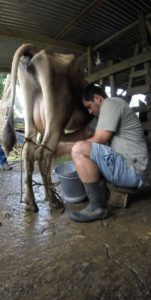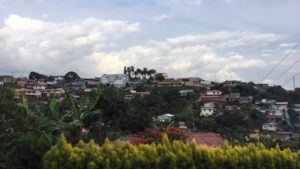Rural living in Costa Rica is pure, relaxed and simple. In the San Isidro area of Costa Rica, where we have been staying for the past week, community members have an extremely sustainable way of living. We visited many farms on our journey and have learned the process of self-sustainability and community-supported initiatives. Hunger, however, is an issue for residents in the Costa Rican cities.
In 2015, the Household Survey reported the poverty rate in Costa Rica was 21.7 percent. This statistic shows that a large number of families are living in poverty. Residents in urban areas struggle to obtain food supplies when they don’t have enough money.
In rural areas of Costa Rica, citizens are supported through family farming and sustainable living. They may not have much money, but are able to stay healthy and nourished because of the agricultural advantages provided by a rural lifestyle. Based on income, farmers could be considered living under the poverty line, but are not impoverished or malnourished because of the food they make themselves through agriculture.
In 2014, it was reported that 12.4 percent of Costa Rica was employed through agriculture.
We’ve had the opportunity to visit a local dairy farm owned by Chrisley, a local farmer. He and his family support themselves through their land. They have a small herd of cows for their milk. They use the milk to create different types of cheeses.
During our tour of Chrisley’s farm we had the pleasure of helping the family make the cheese they needed to produce for the day. We rolled the cheese into balls. Each week they make 350 cheese balls to sell.
The remarkable aspect of Chrisley’s farm is that he supports his family making the cheese, and many families who do not have the means to produce milk or cheese, or the land needed to raise animals and different crops. Chrisley will sell these families the cheese balls for a low price allowing them to become the middleman in the selling process. The families then sell the cheese for a slightly higher price to local stores and citizens.
An important aspect of the process is that Chrisley allows the families to purchase the cheese balls on credit and then return at the end of the day to pay their debts in cash. One family purchases 50 percent of the cheese balls.
In this area of Costa Rica, the community members look out for each other so no one goes hungry. Without Chrisley’s farm and his service to the community, many families would be unemployed and unable to support their families and provide for health care.
Chrisley told us that sometimes they do not feel rich because they do not have expensive phones or television but he knows that his family will not go hungry and that is what is important.
Chrisley’s story relates to hunger issues in major cities, such as San Jose, the capital of Costa Rica. There is not much land for purchase in those areas, therefore people cannot support themselves through farming.
In March 2015, the president of Costa Rica, Luis Guillermo Solis, created a program to help at least 54,000 families out of extreme poverty. The plan is called “Puente al Desarrollo” or the “Bridge to Development.”
According to the Costa Rica 2016 Economic Assessment, the plan is a “…strategy to reduce extreme poverty. Such strategy encompasses social assistance, to ensure the basic needs are met and also a social protection component whereby social workers establish a family plan composing education, training, health and childcare.” This program works if those receiving aid comply with the conditions, such as sending a child to school and going to training programs. If the participants stay in the program, they receive $140 a month.
This effort is ongoing and the goal is to pull around 40,000 families out of poverty by 2018. The “Bridge to Development” solution is an opportunity for children not receiving proper nourishment and healthy living to establish an education and life for themselves outside of poverty.
There is a program in place in Costa Rica called Scaling Up Nutrition. In 2014, this program was established to improve Costa Rica’s health and nutrition problems. The program report stated “The challenge for Costa Rica is to increase financial and human resources in order to strengthen actions on malnutrition.” This is an ongoing effort in Costa Rica and has made significant advances in the last two years.
My hope is that the programs in place will continue to improve lives in Costa Rica’s major cities. During our study abroad, we have had the opportunity to witness how a community helps itself work and grow together. I hope the idea of community and sustainability can find its way into the lives of those living in inner cities.


